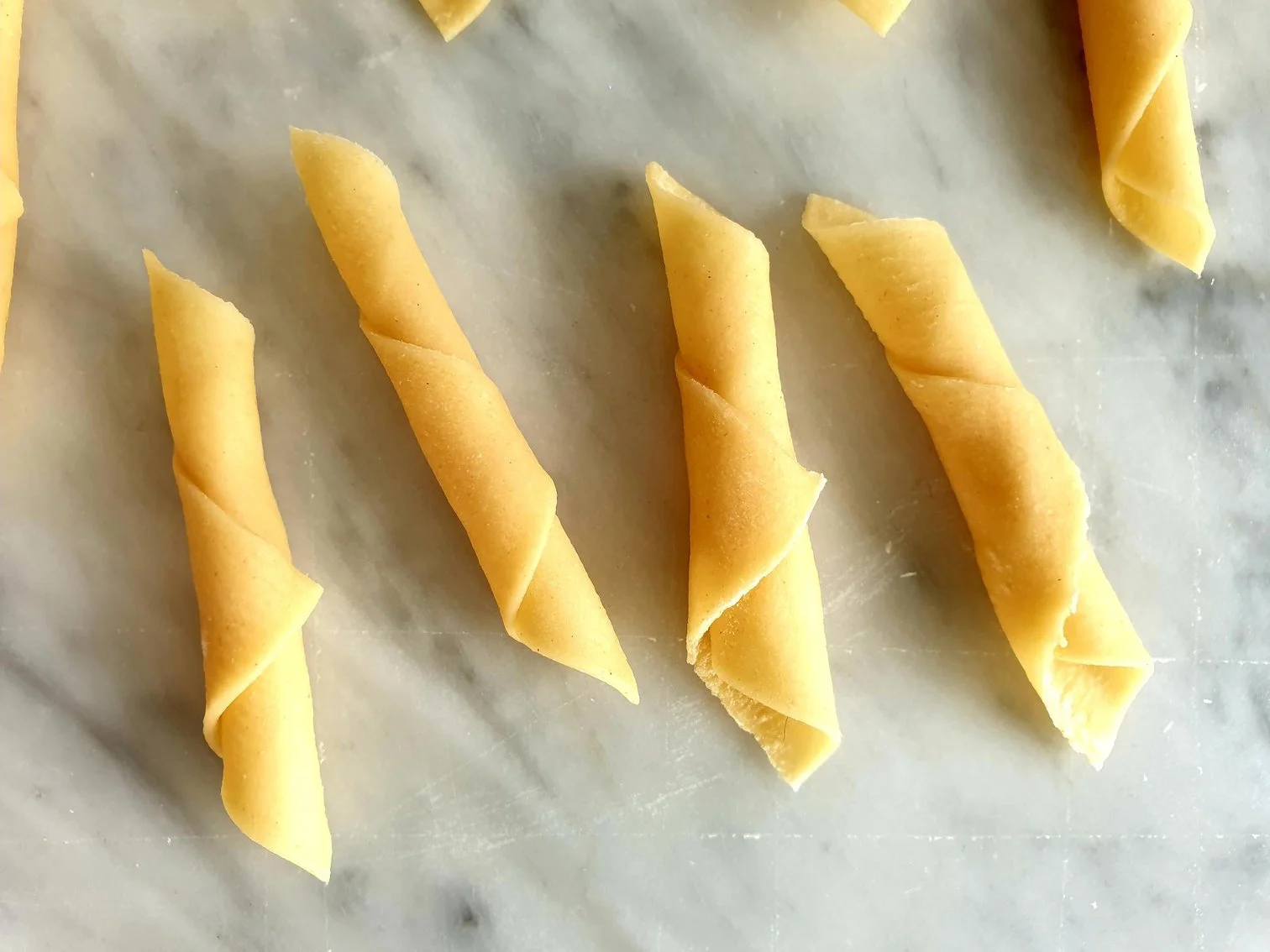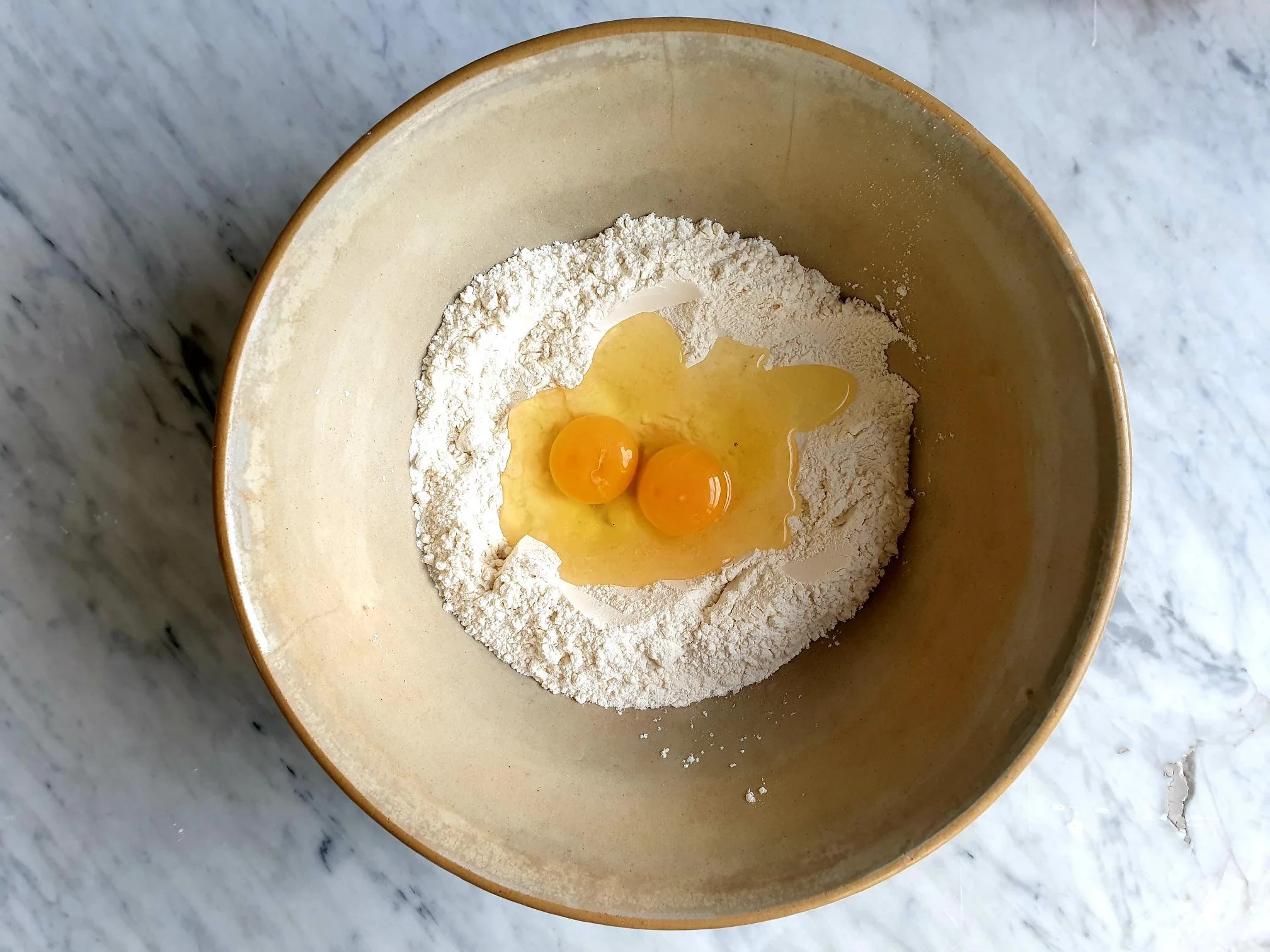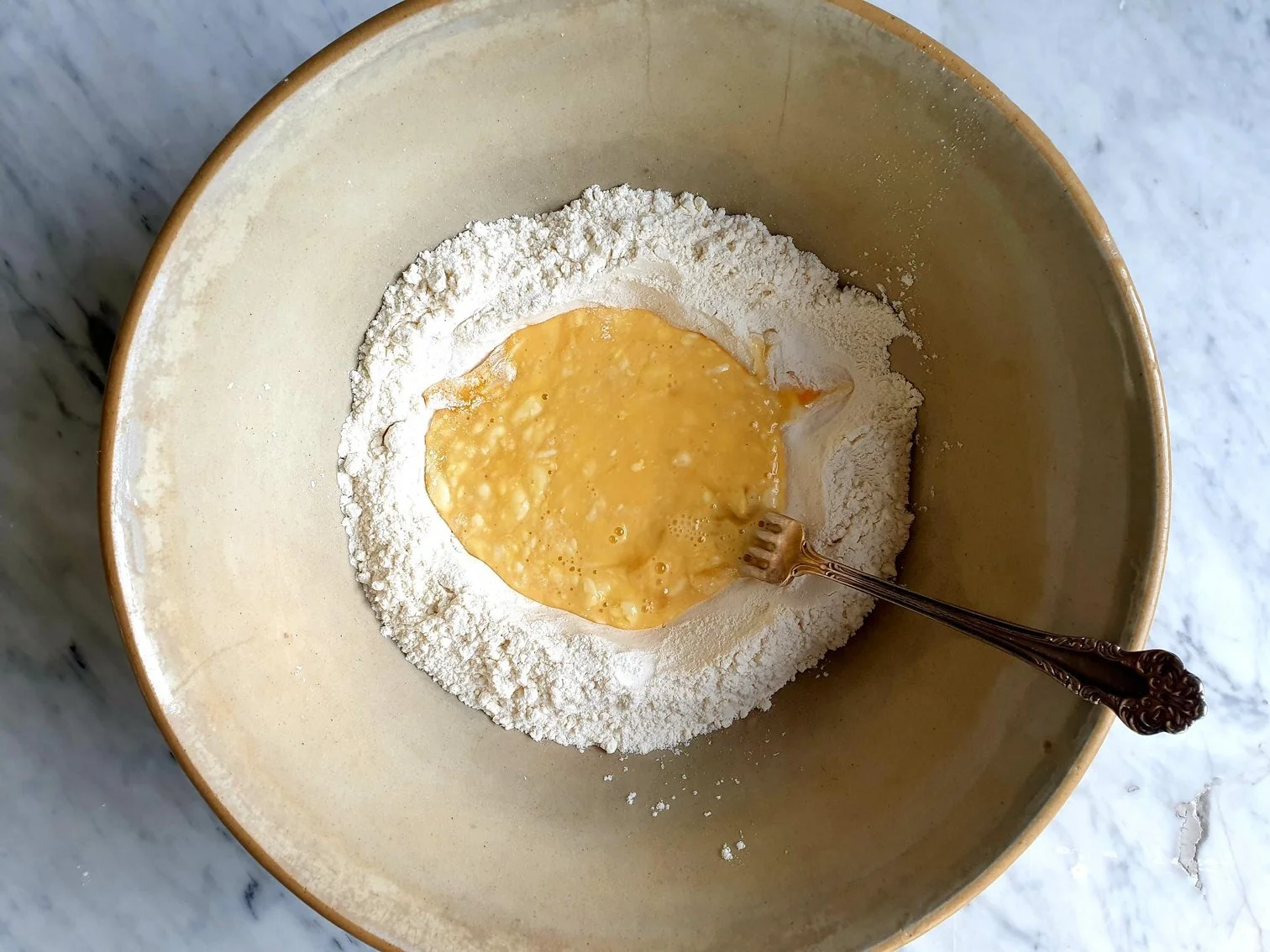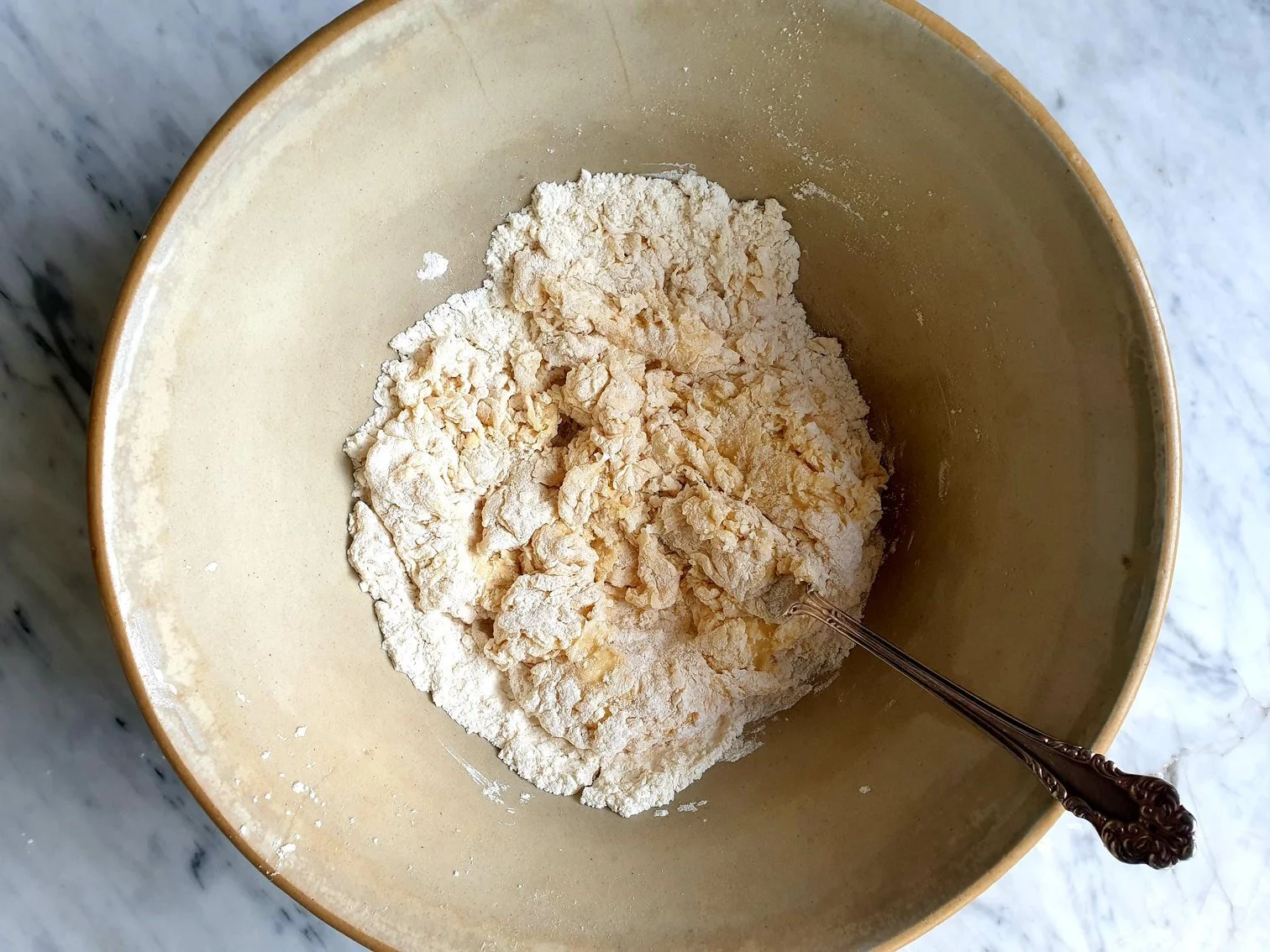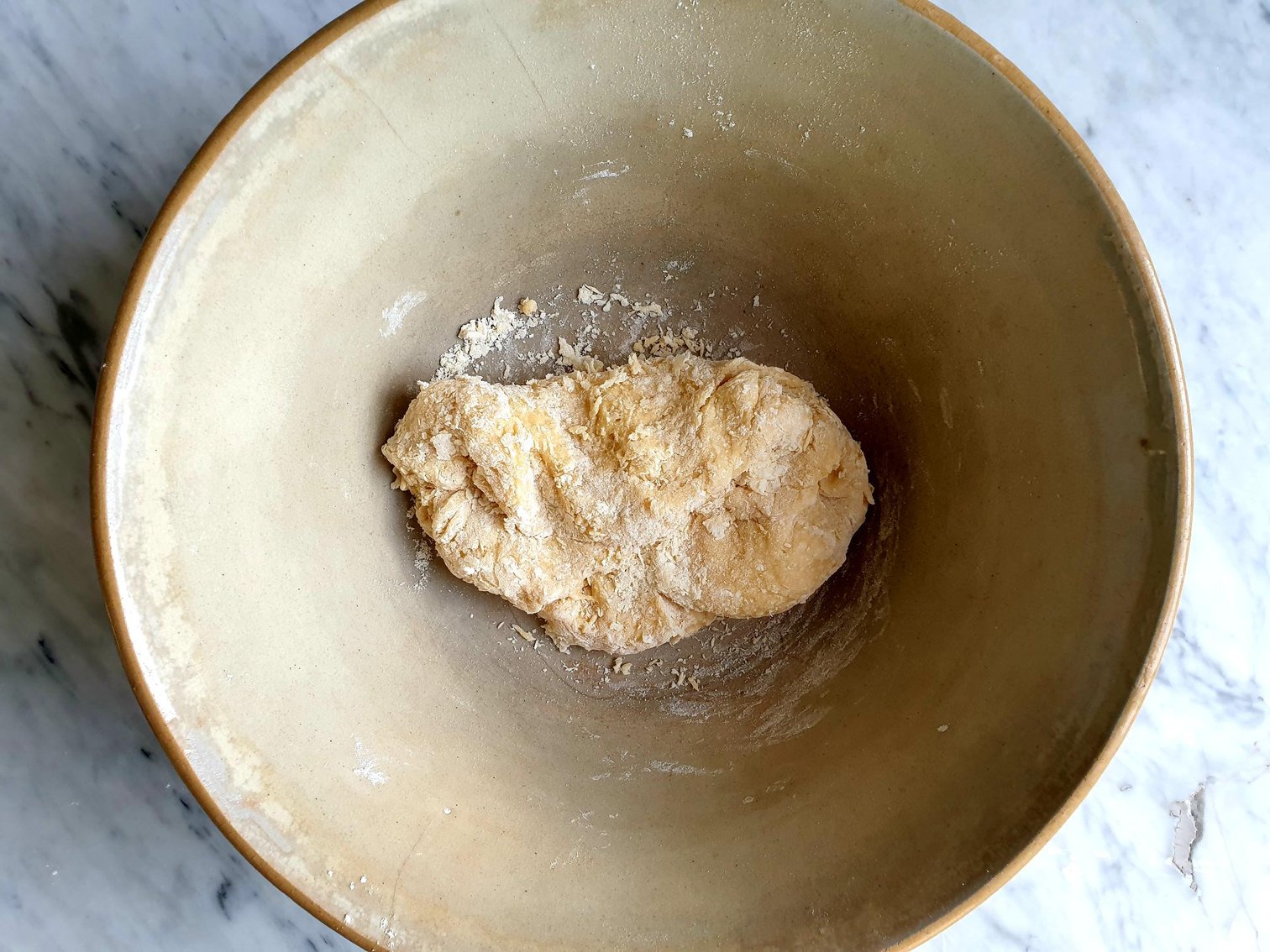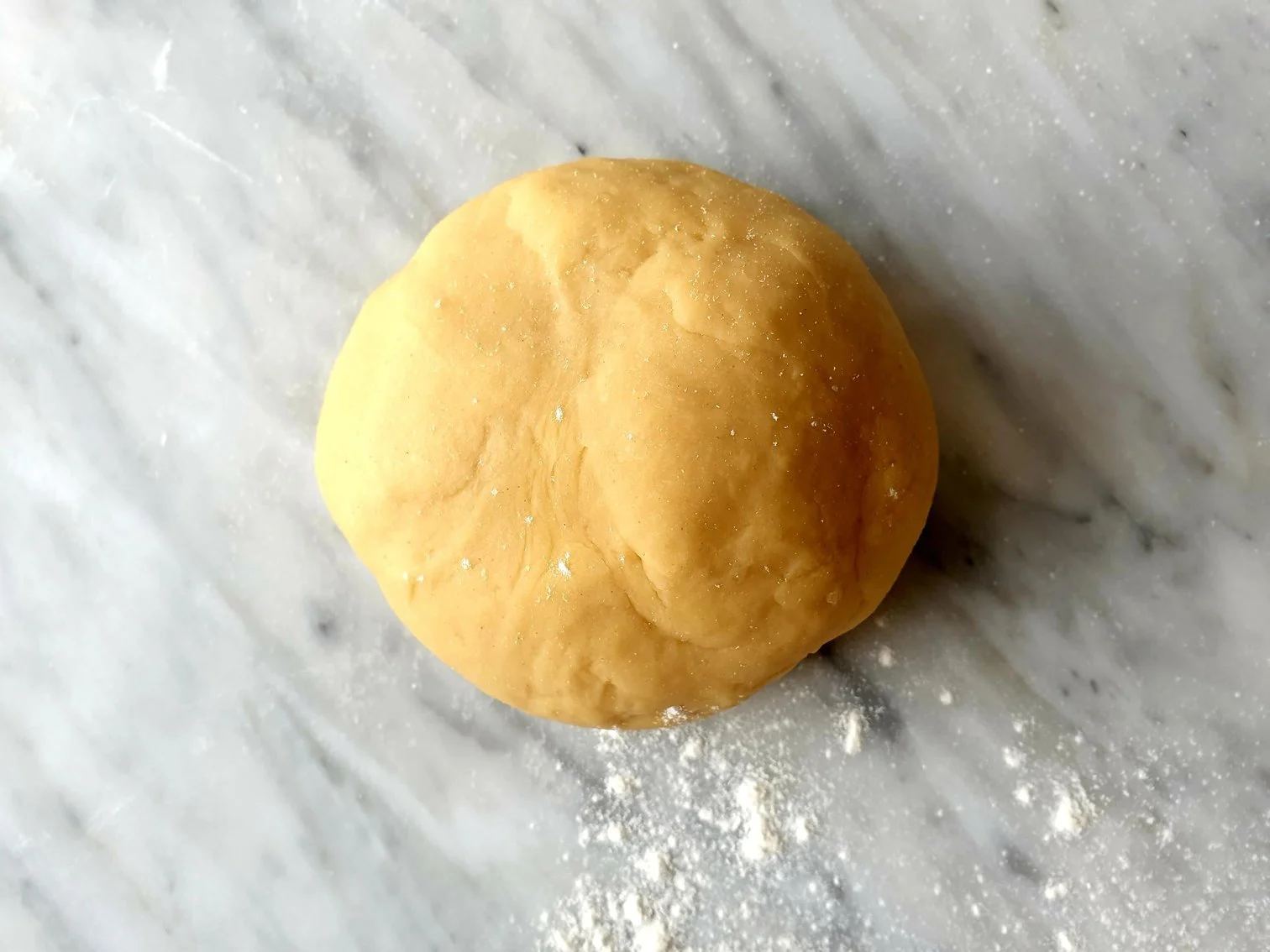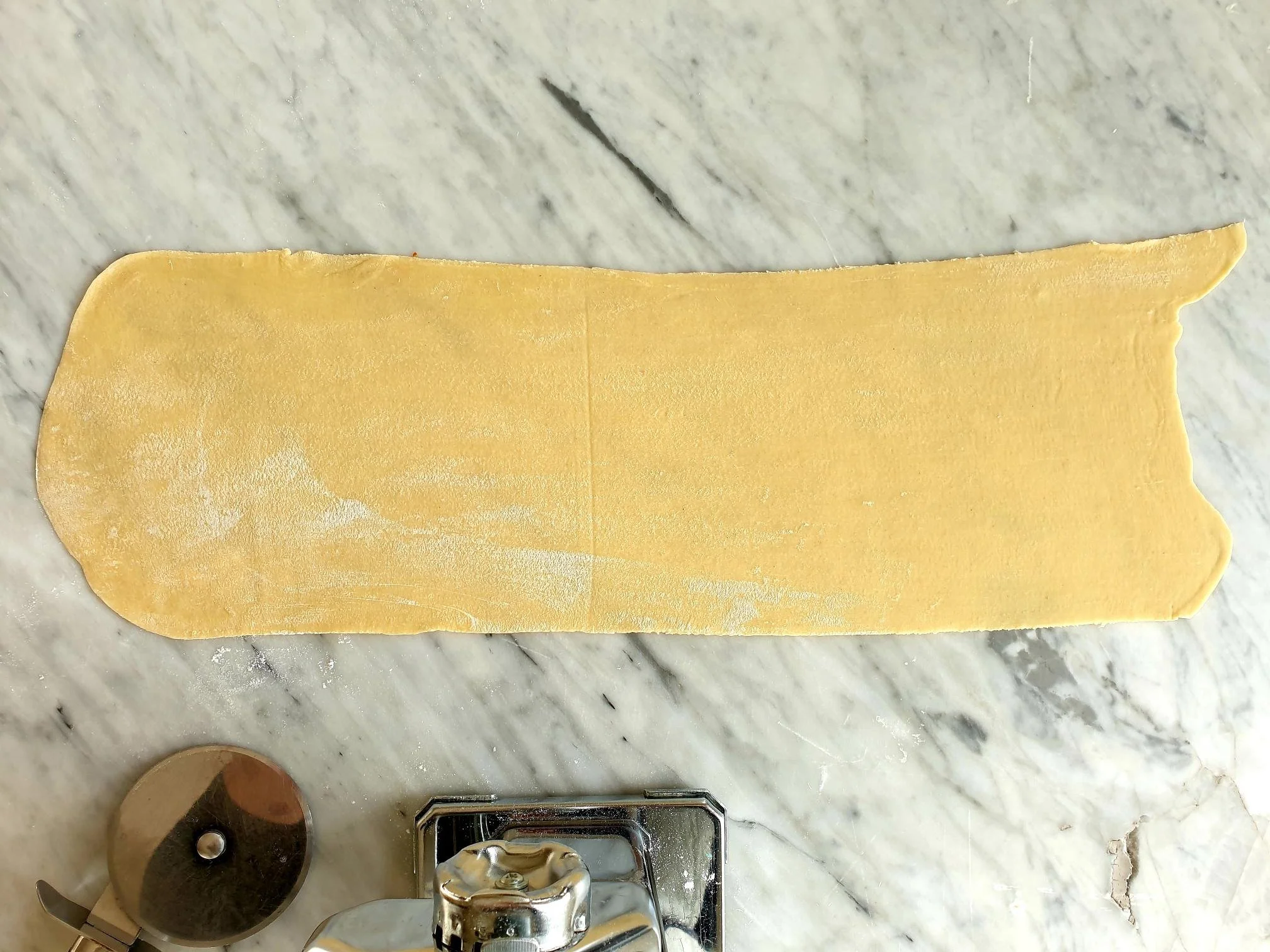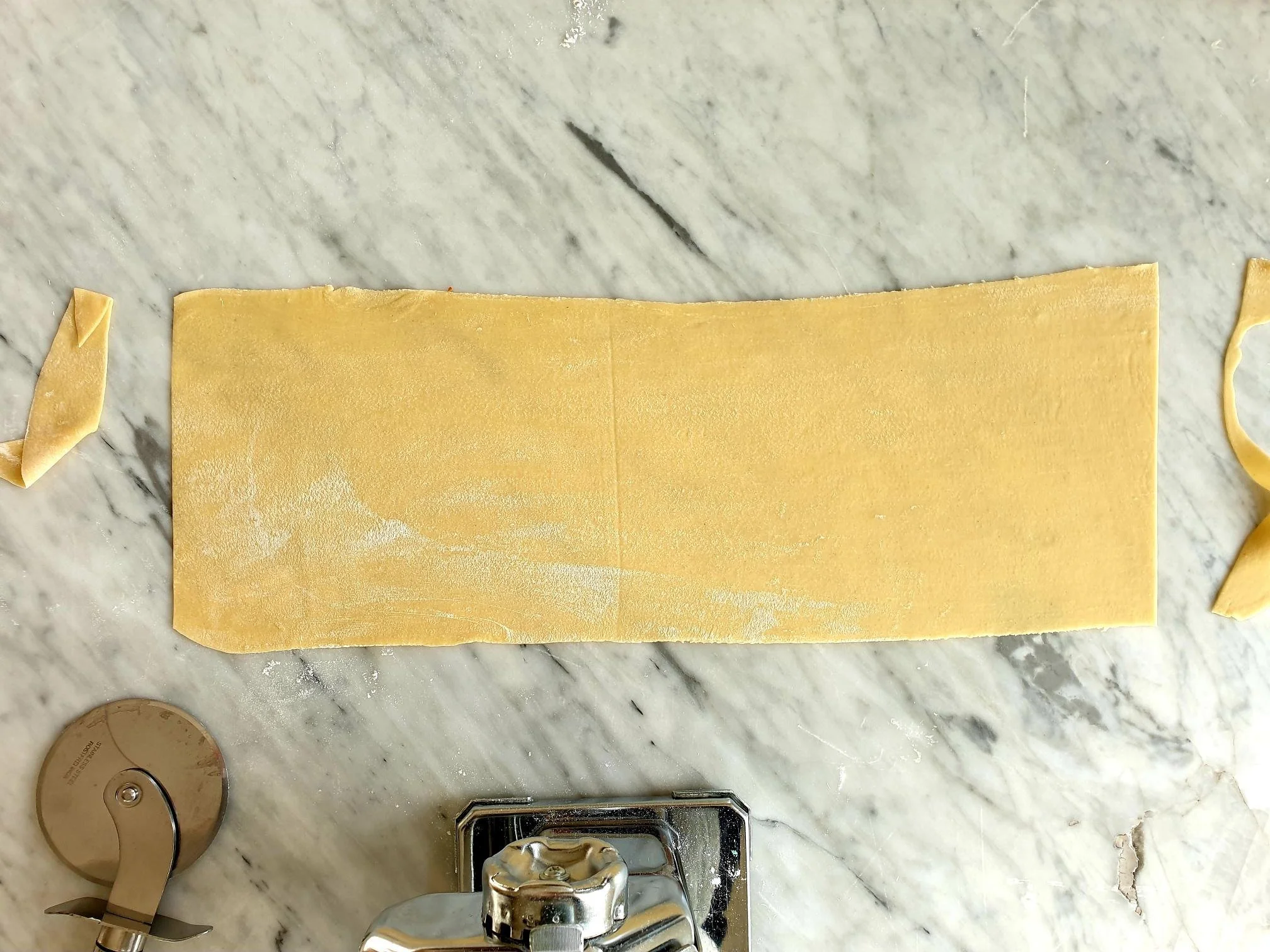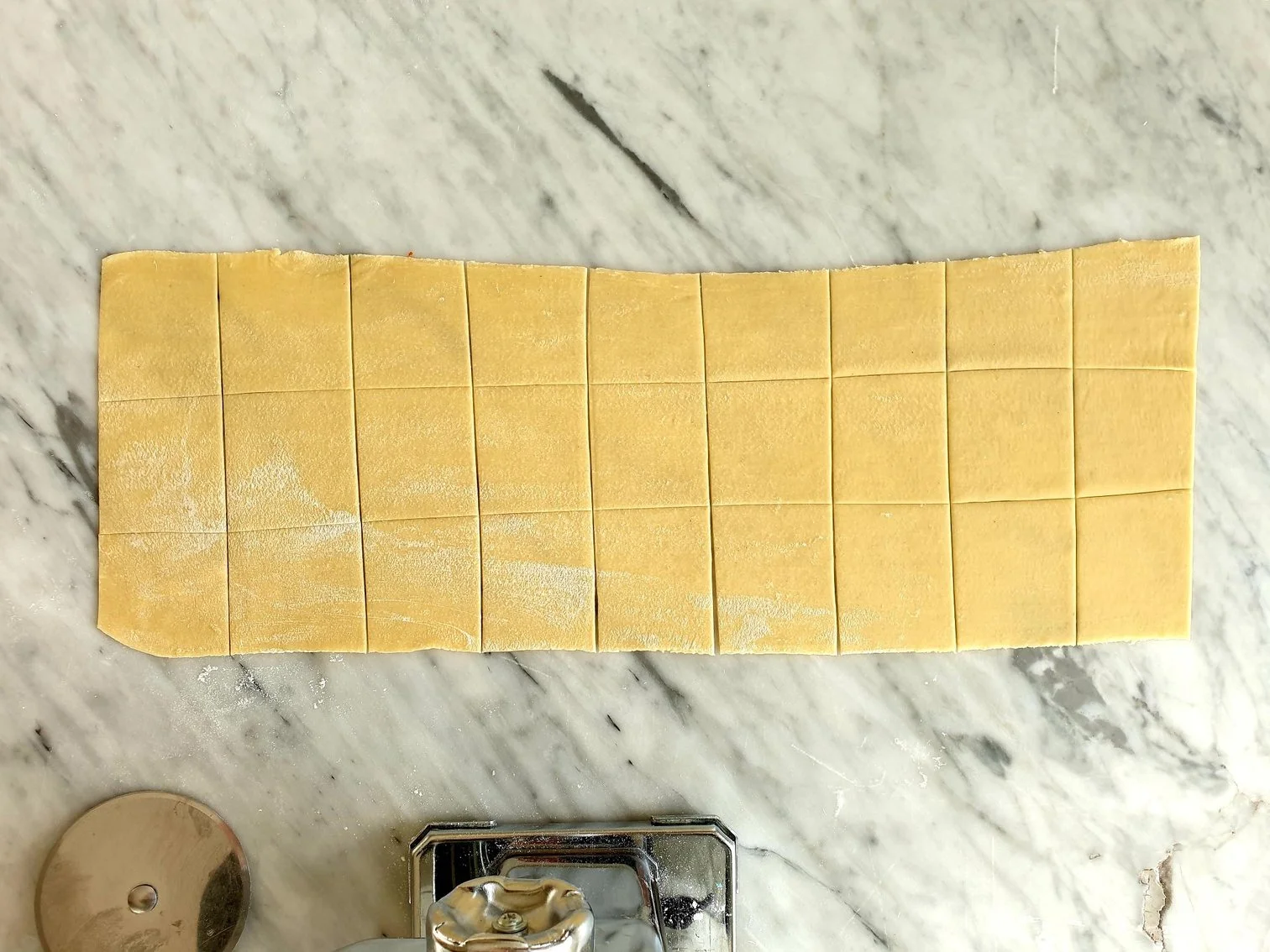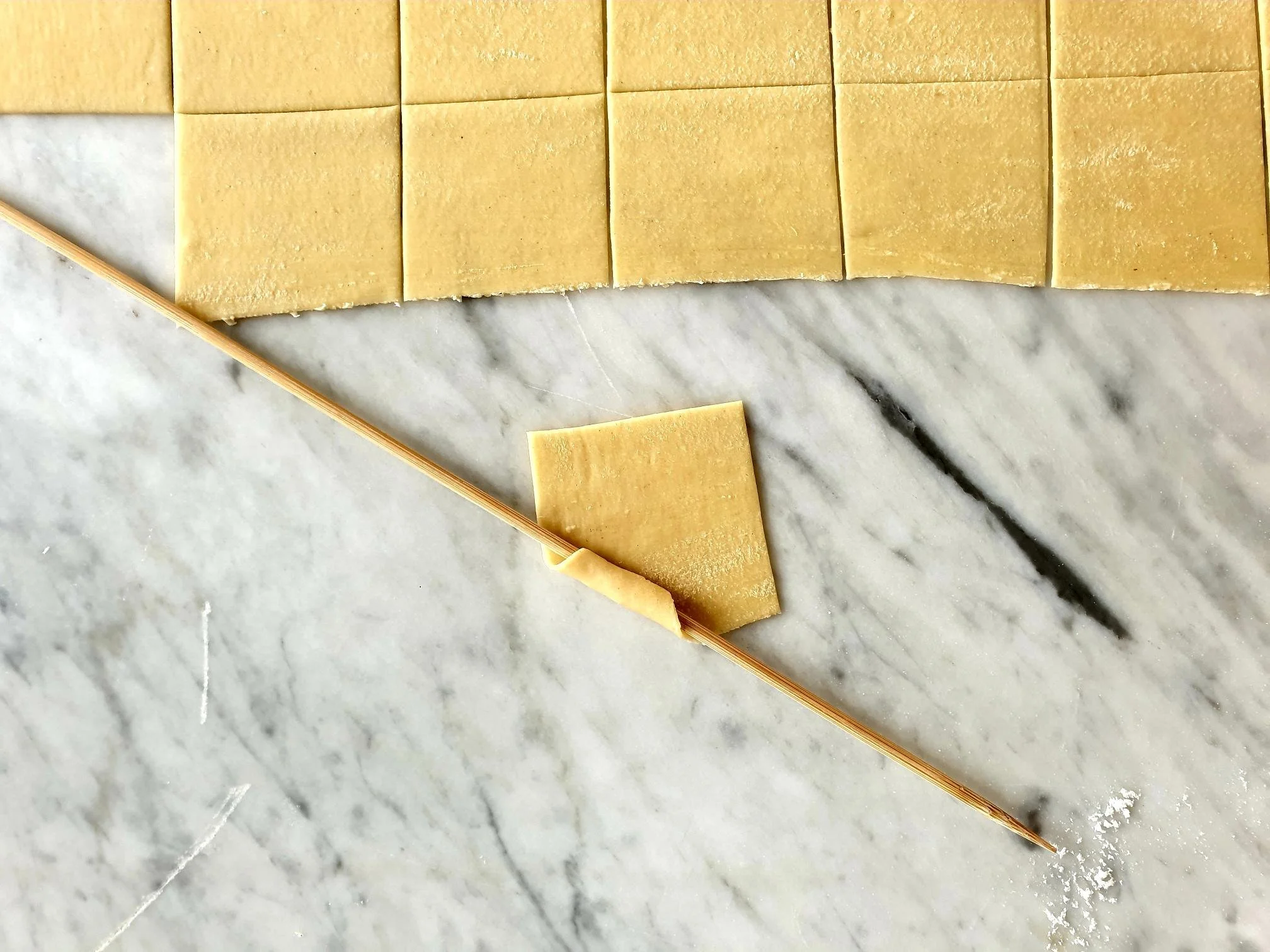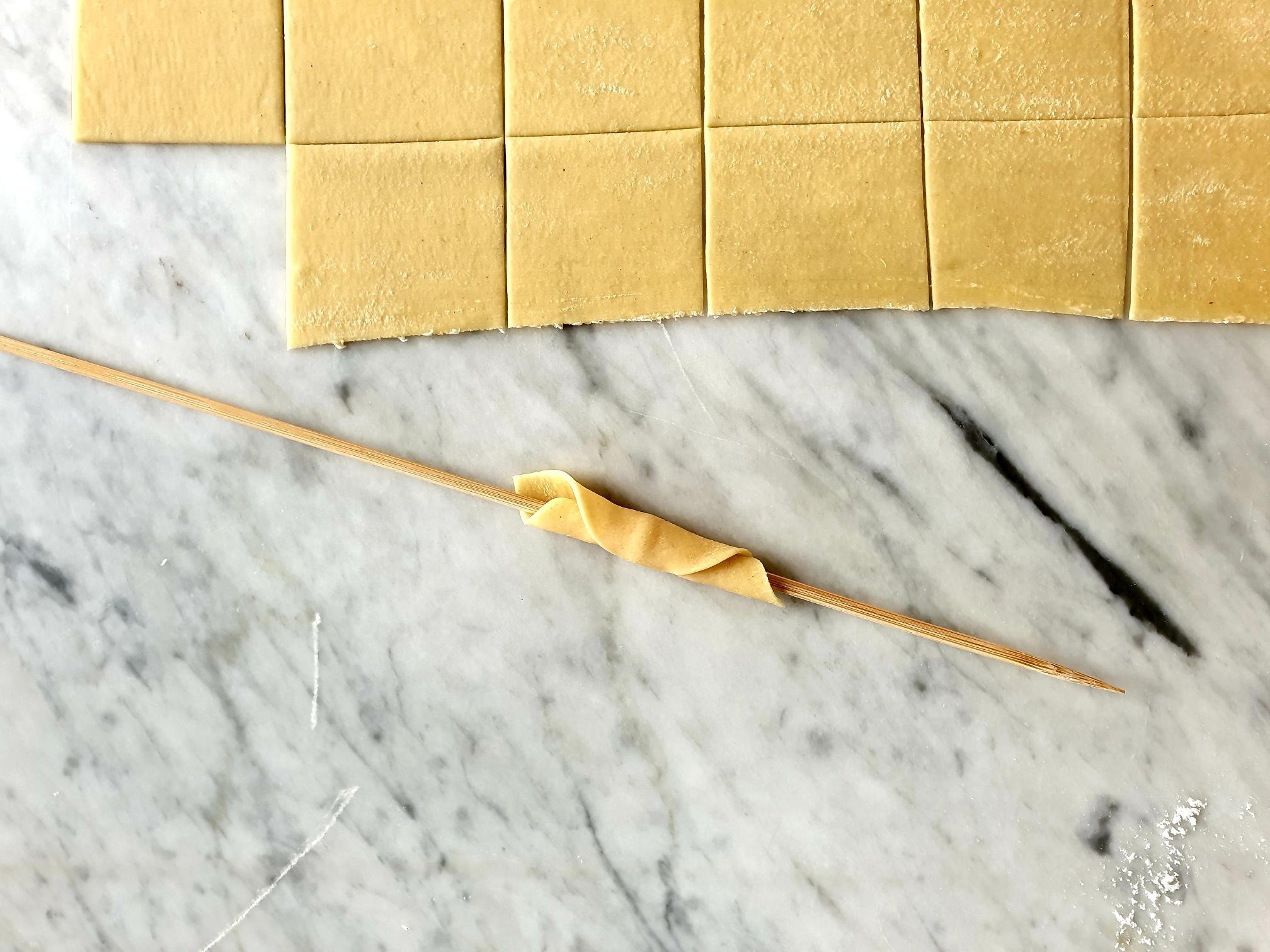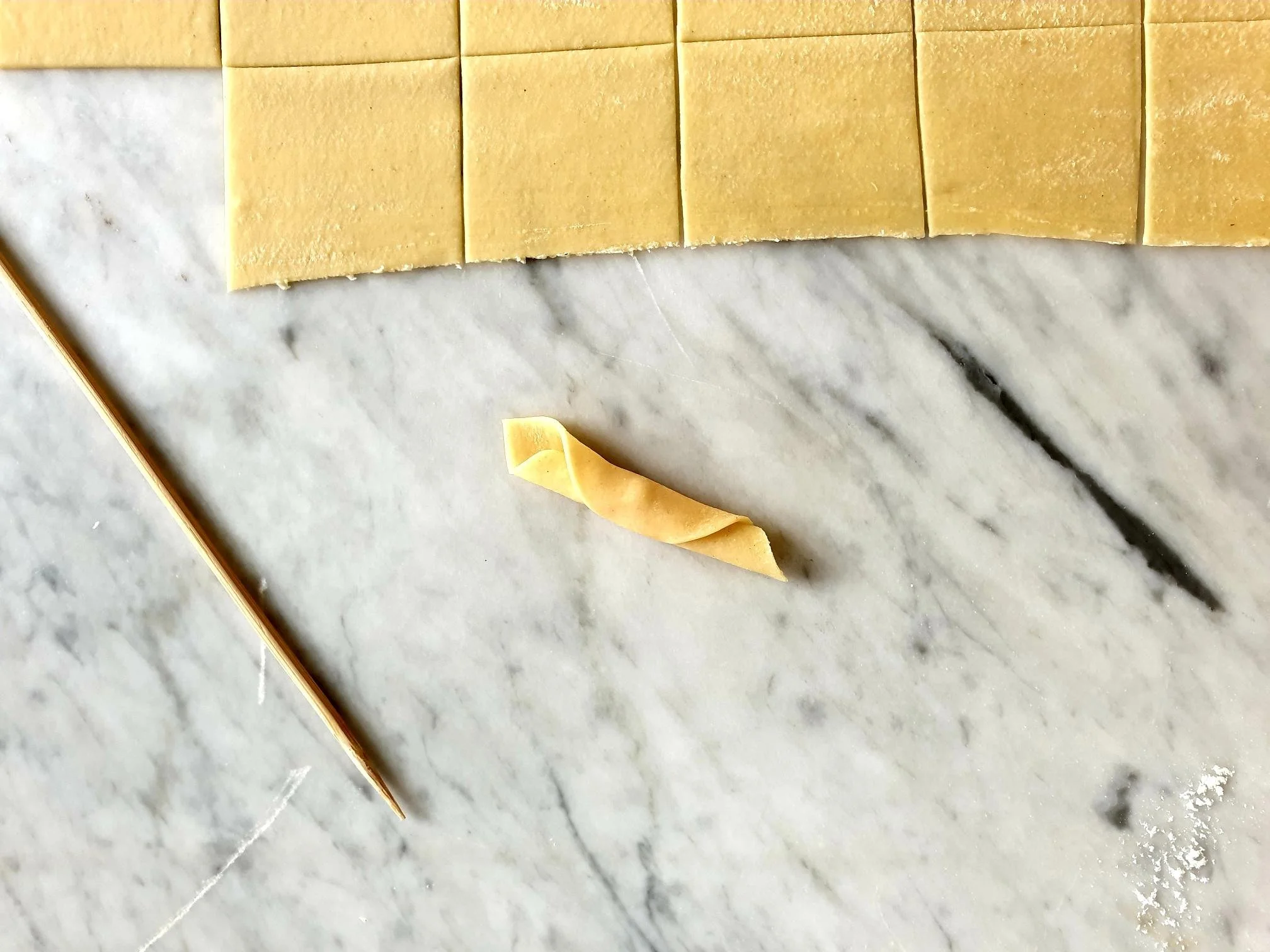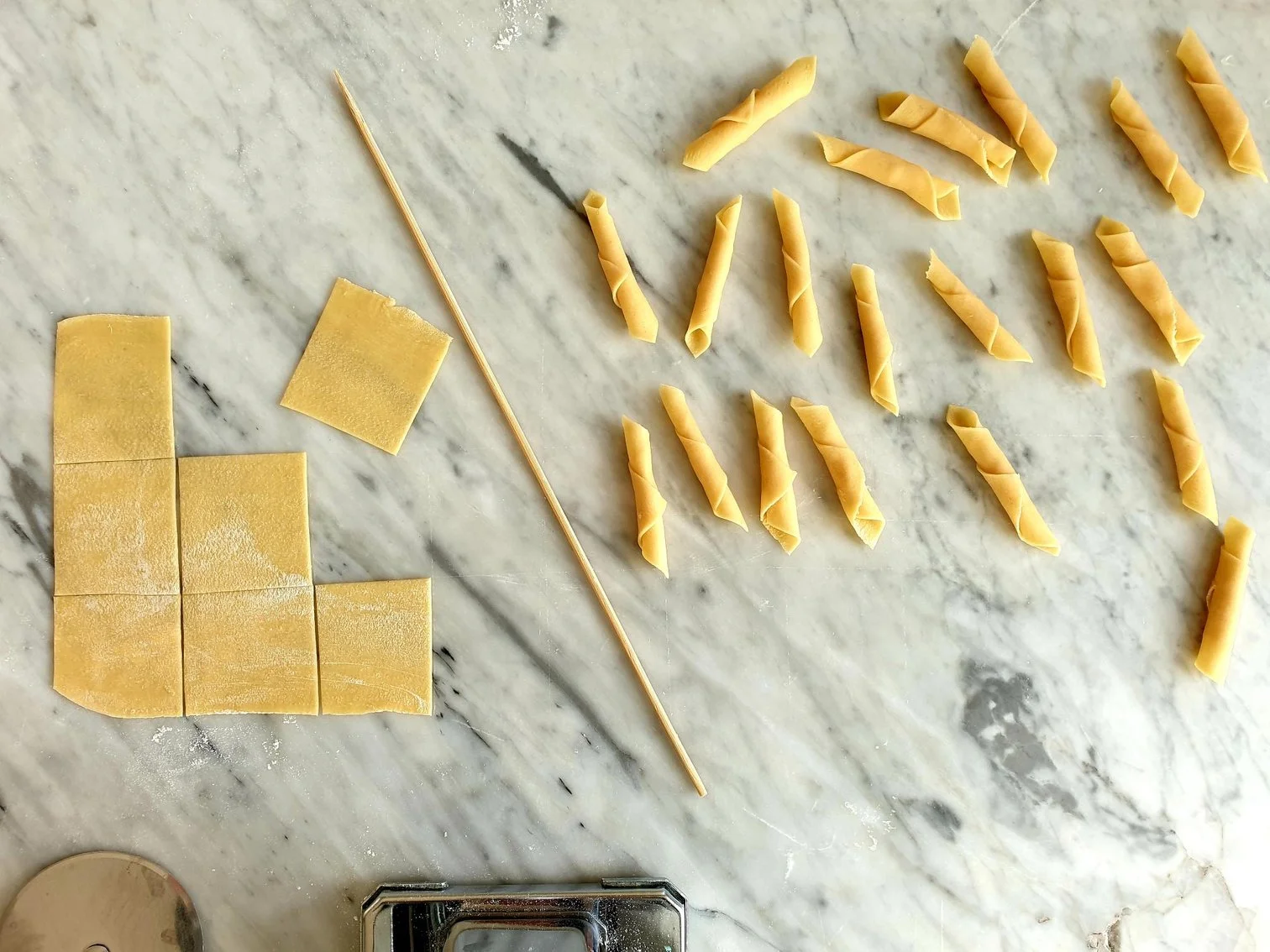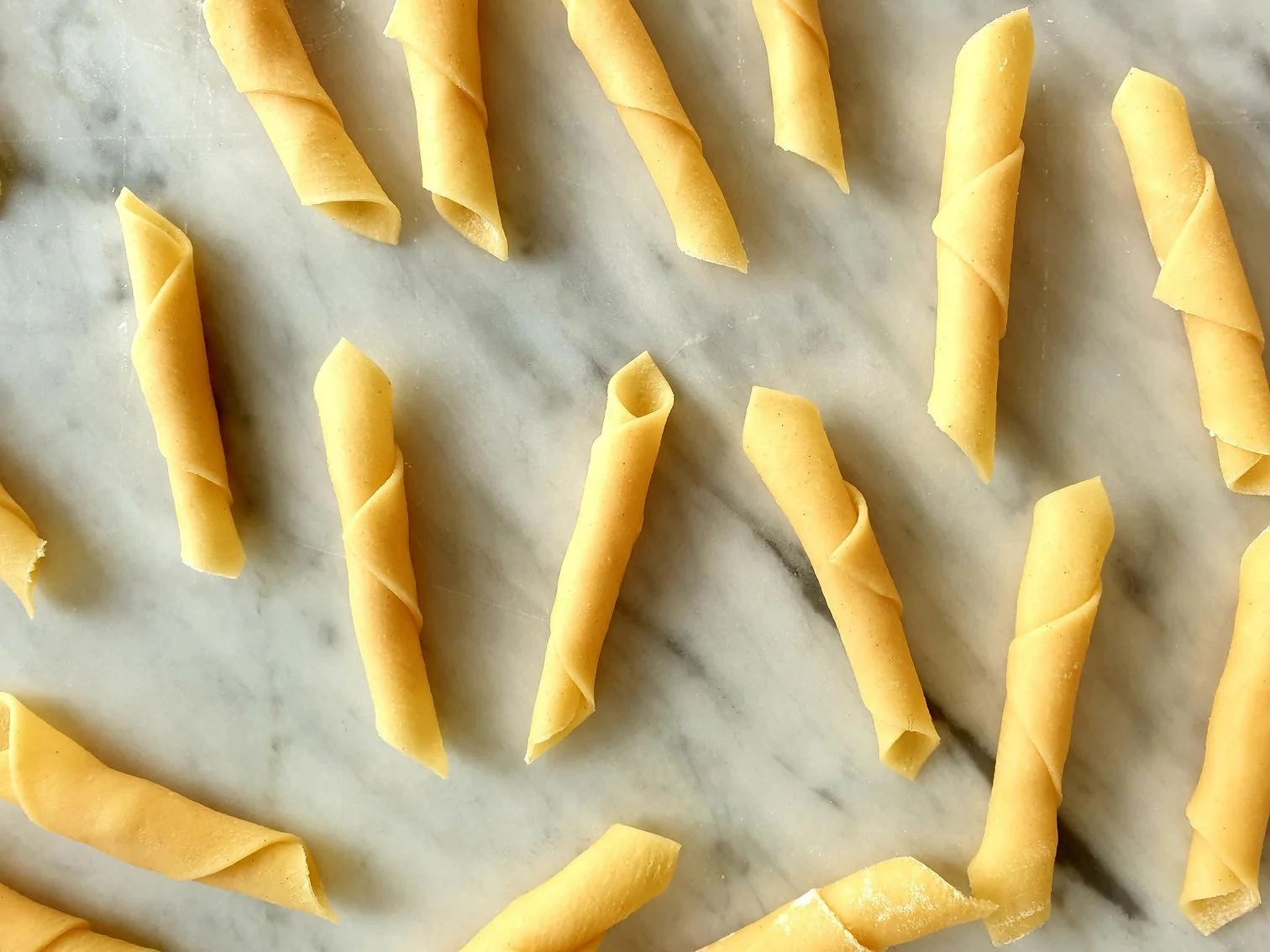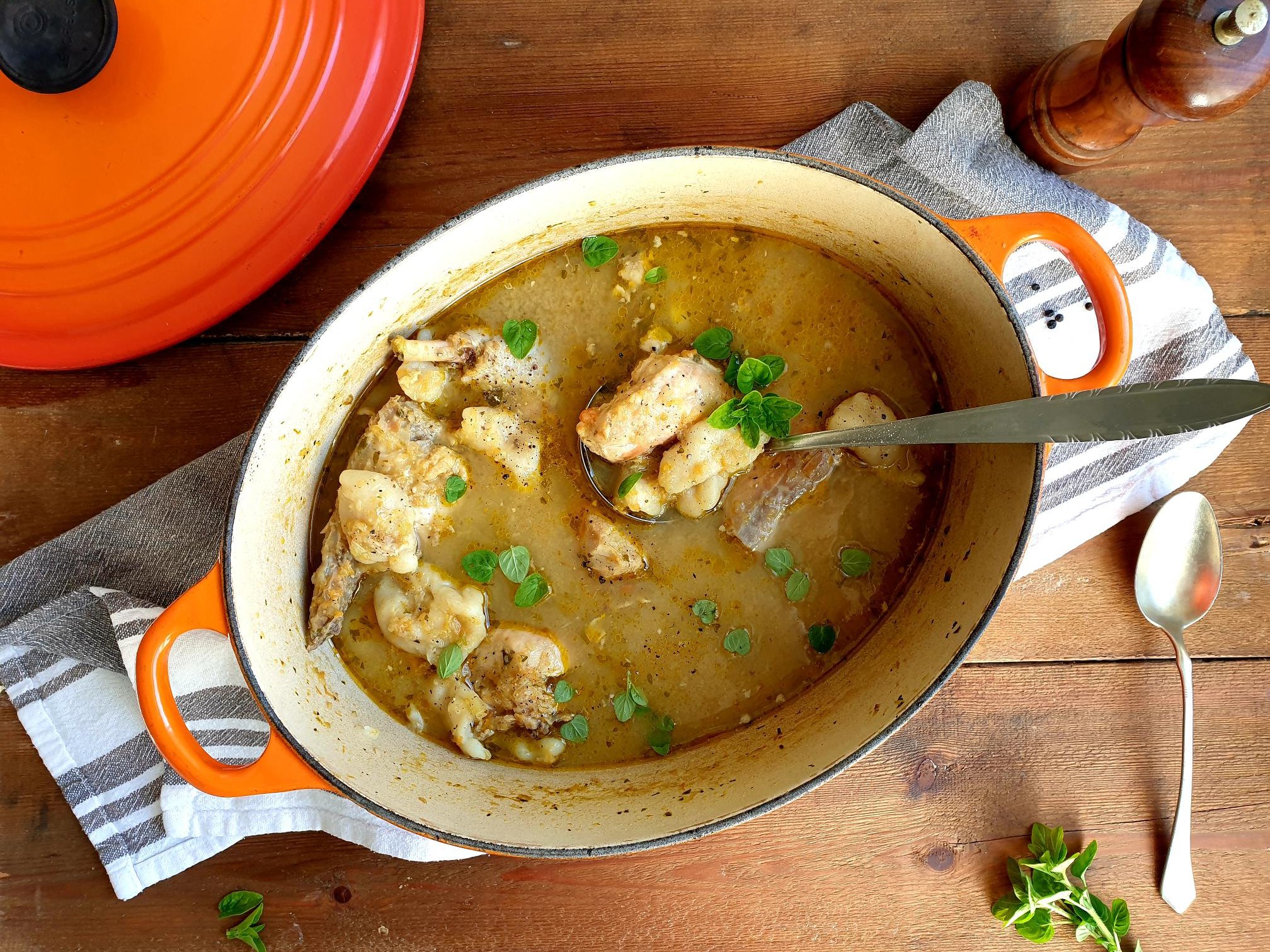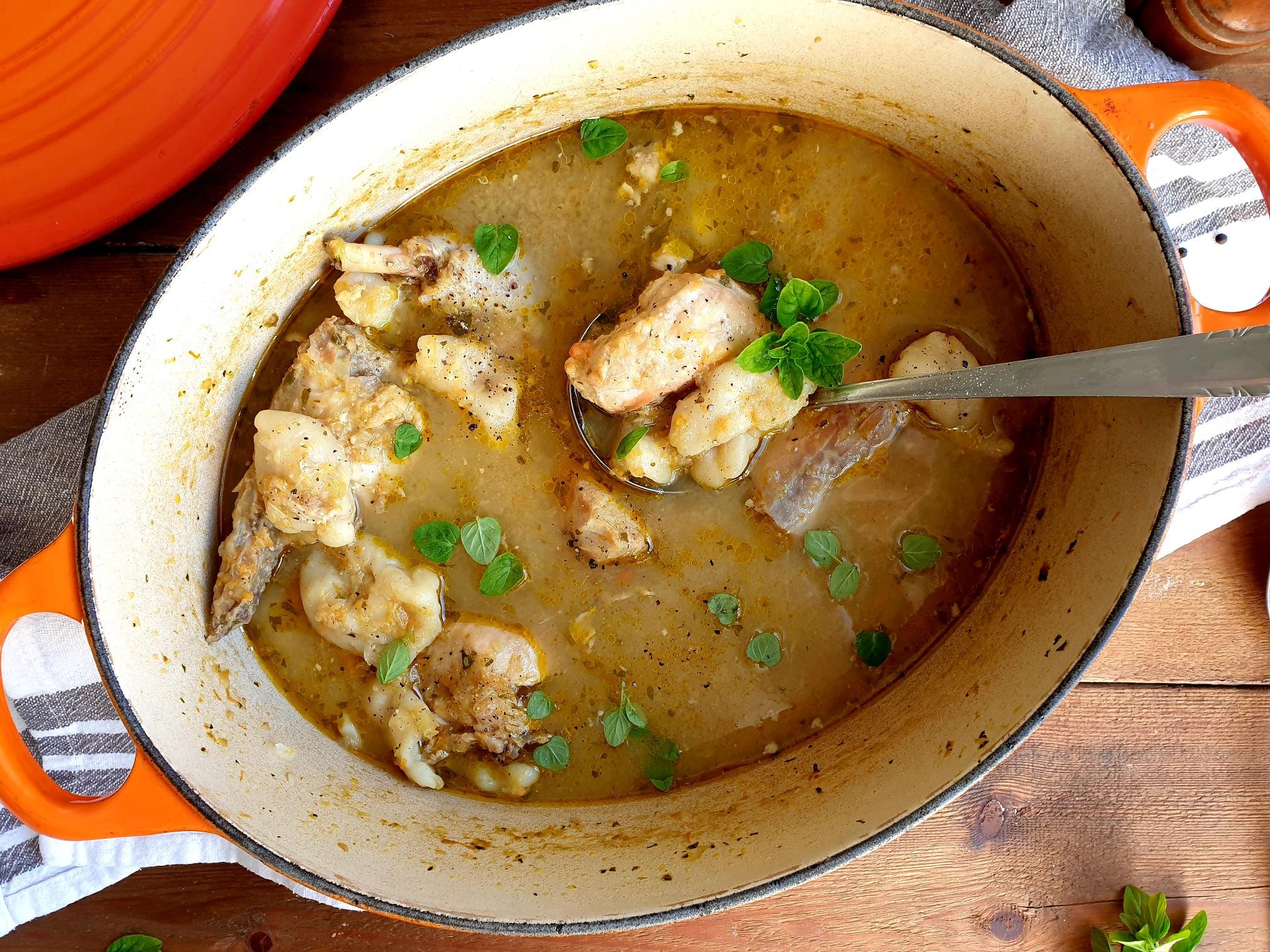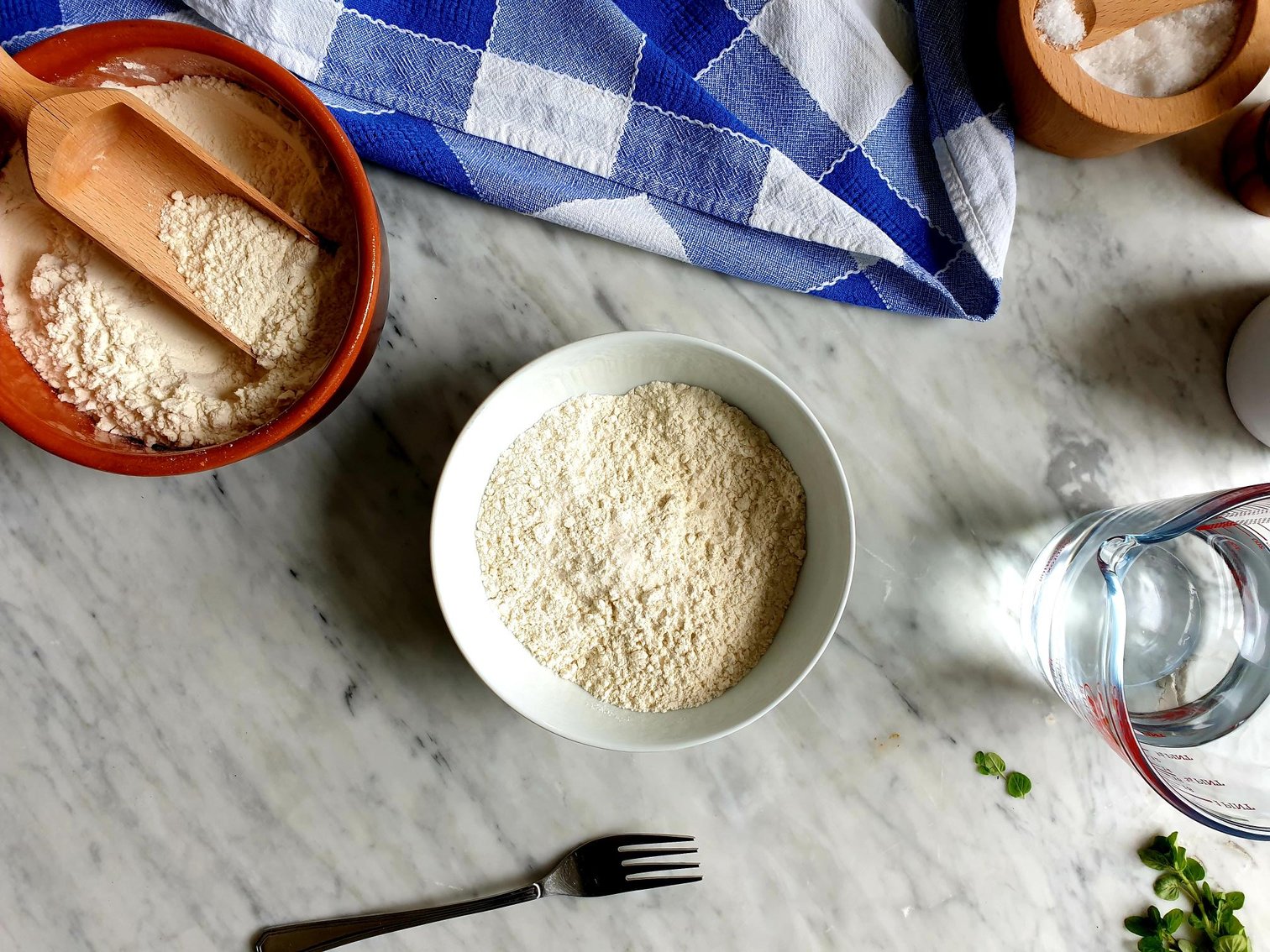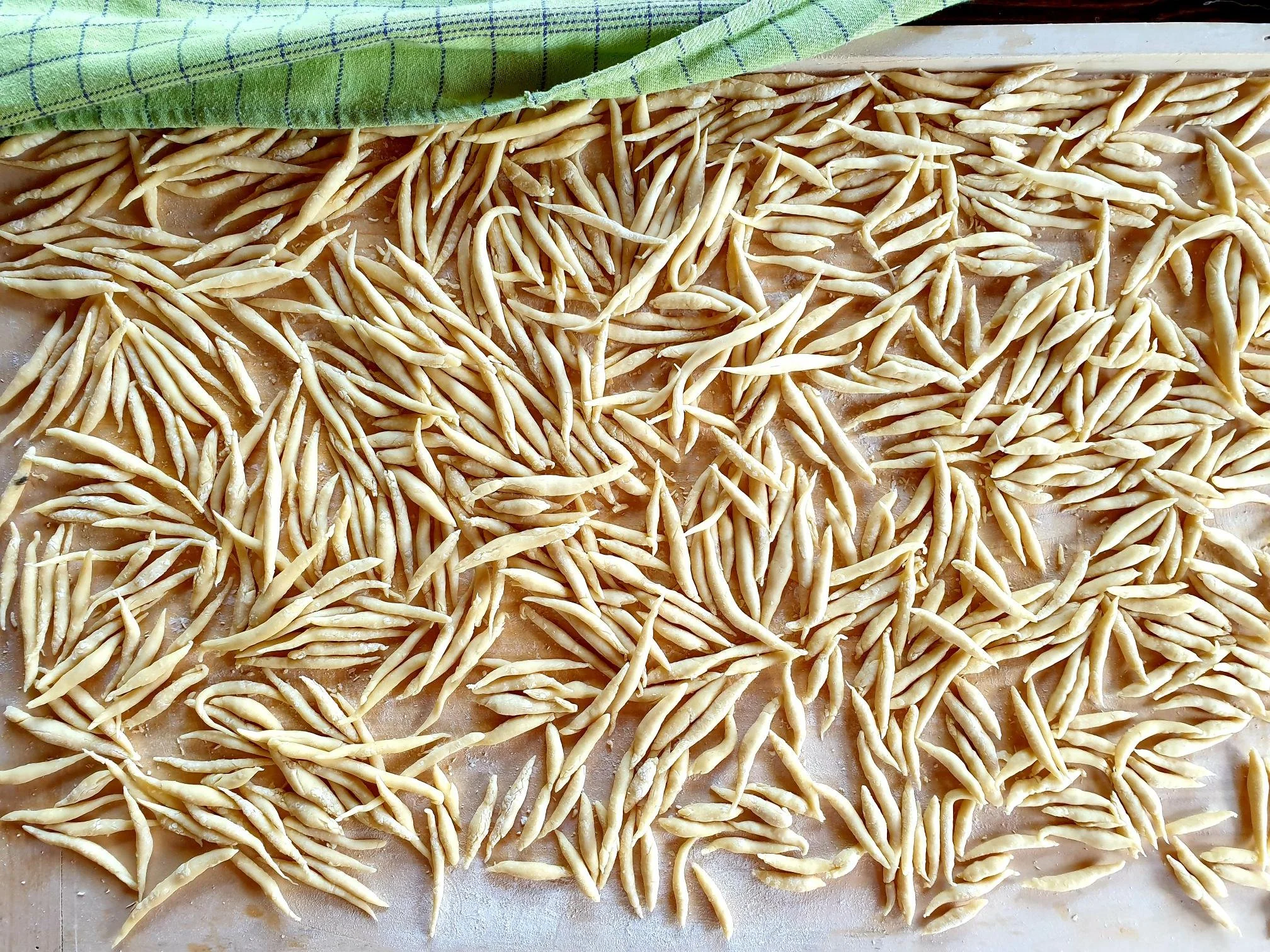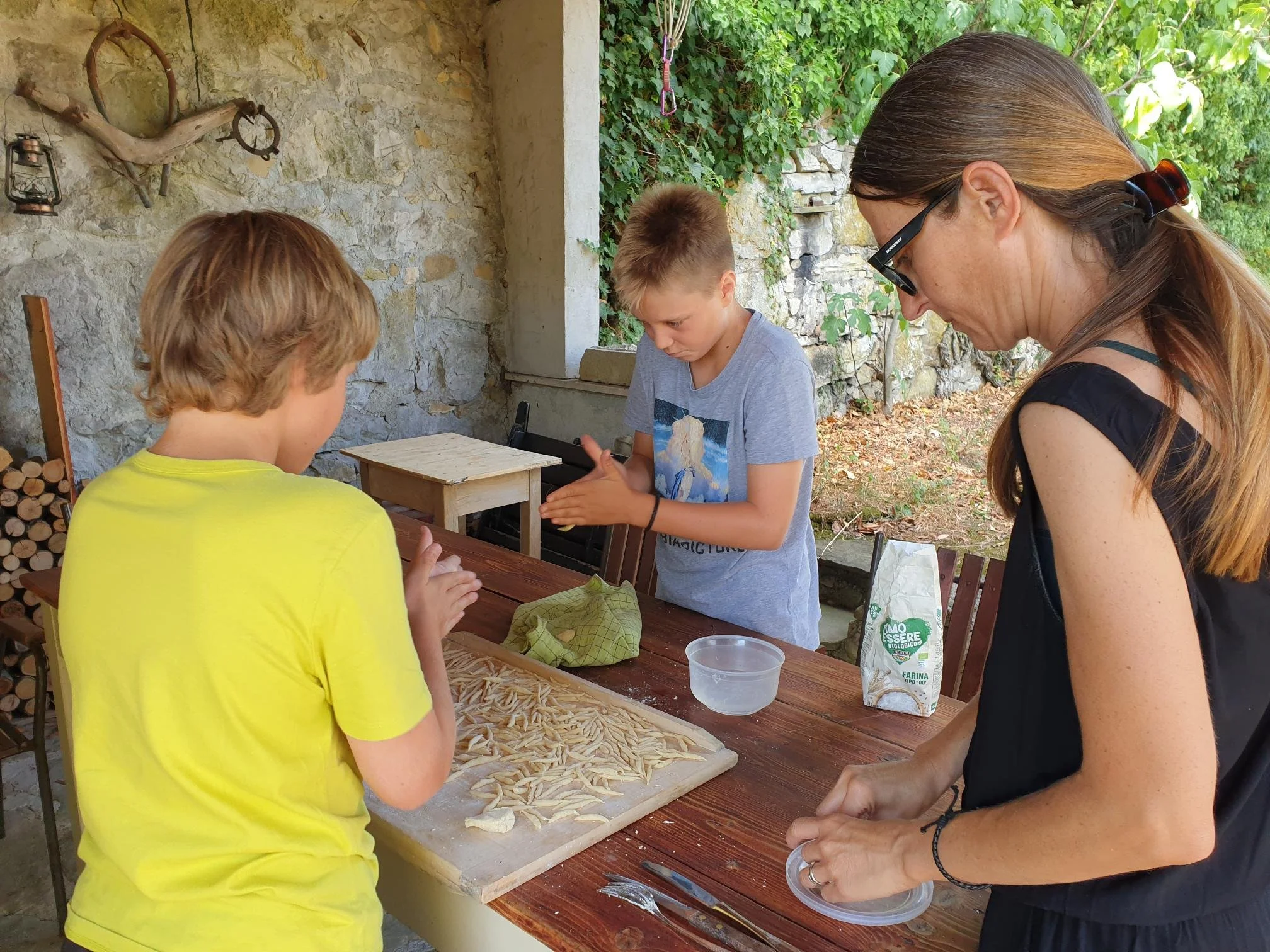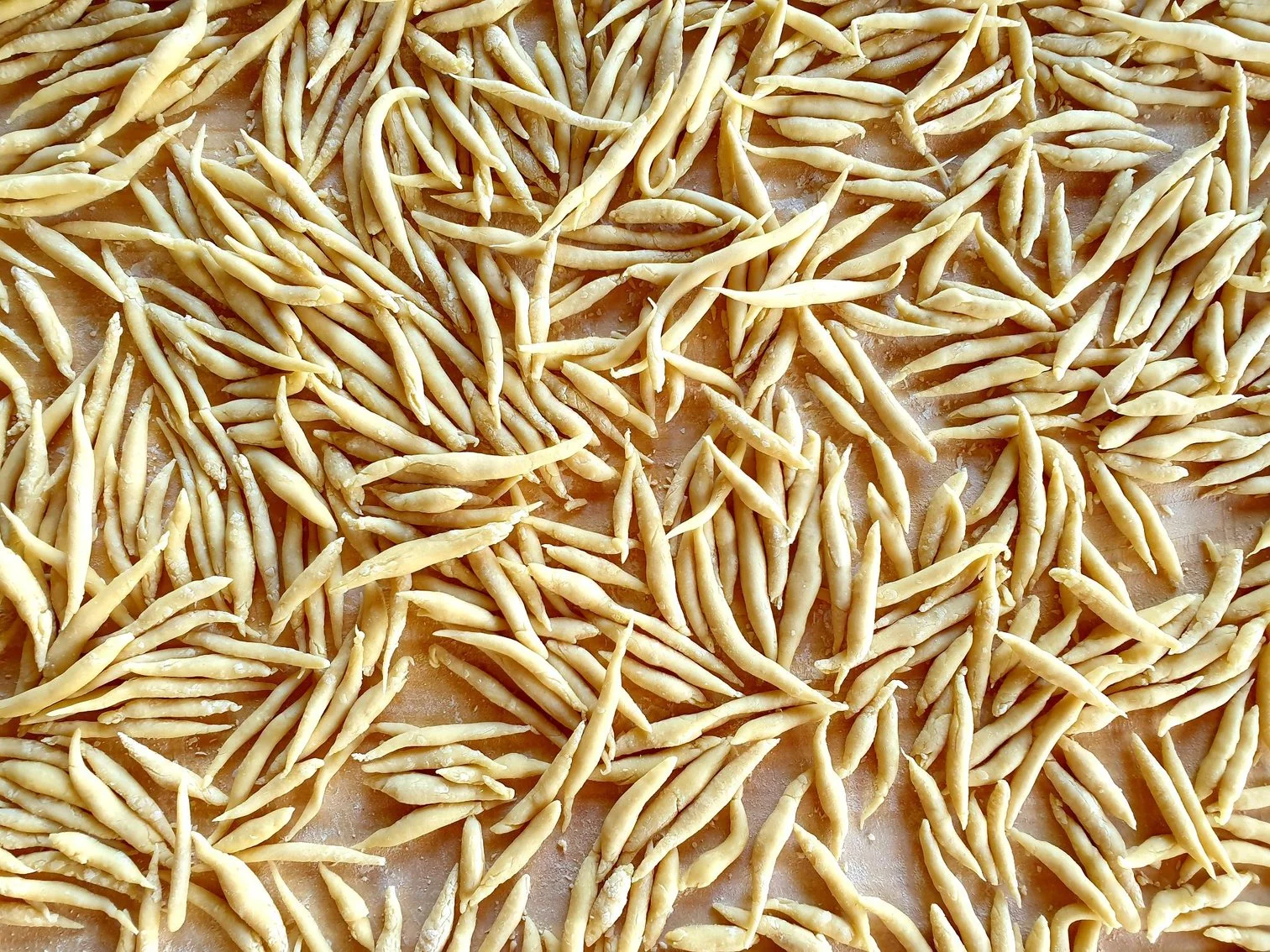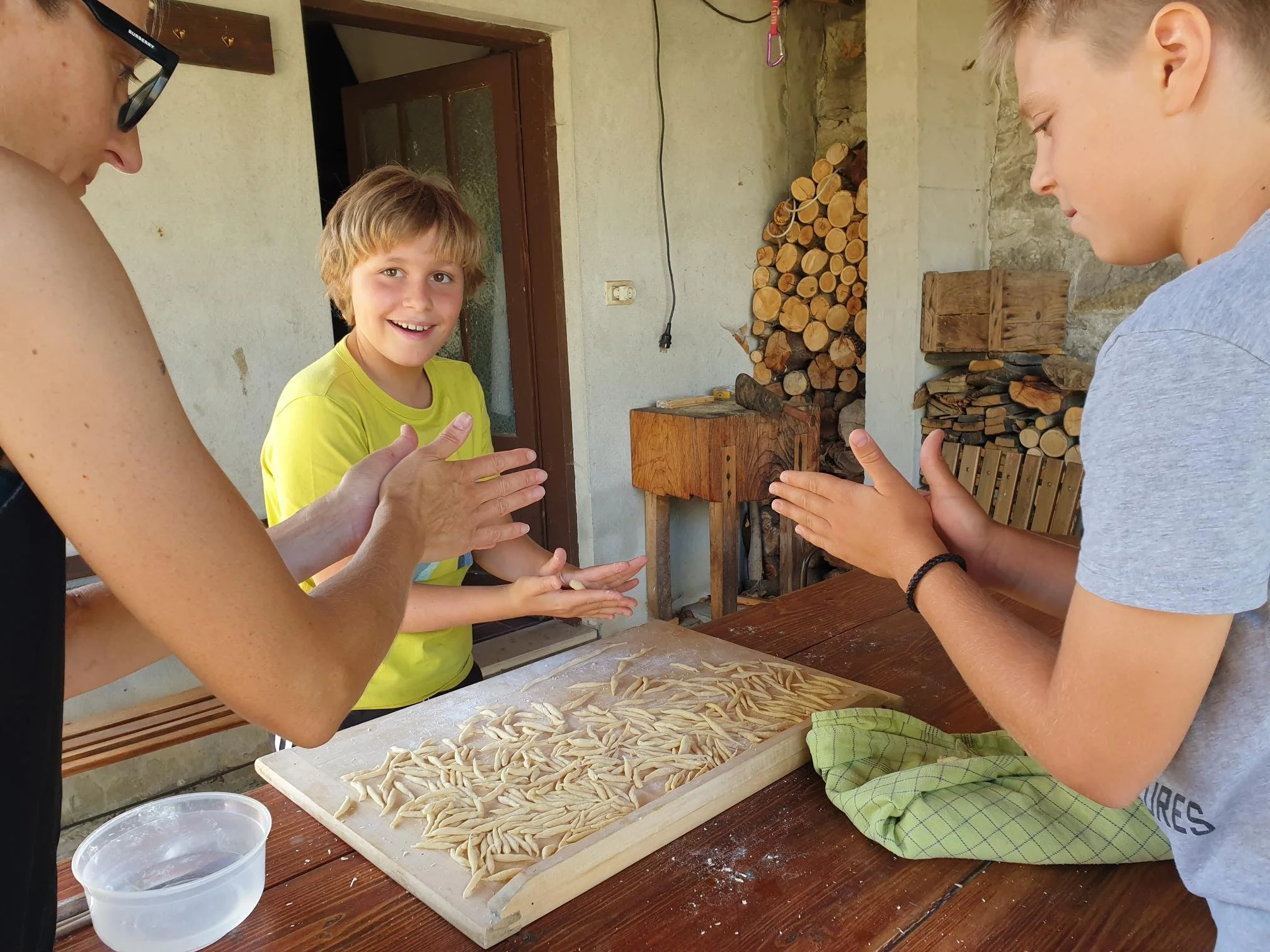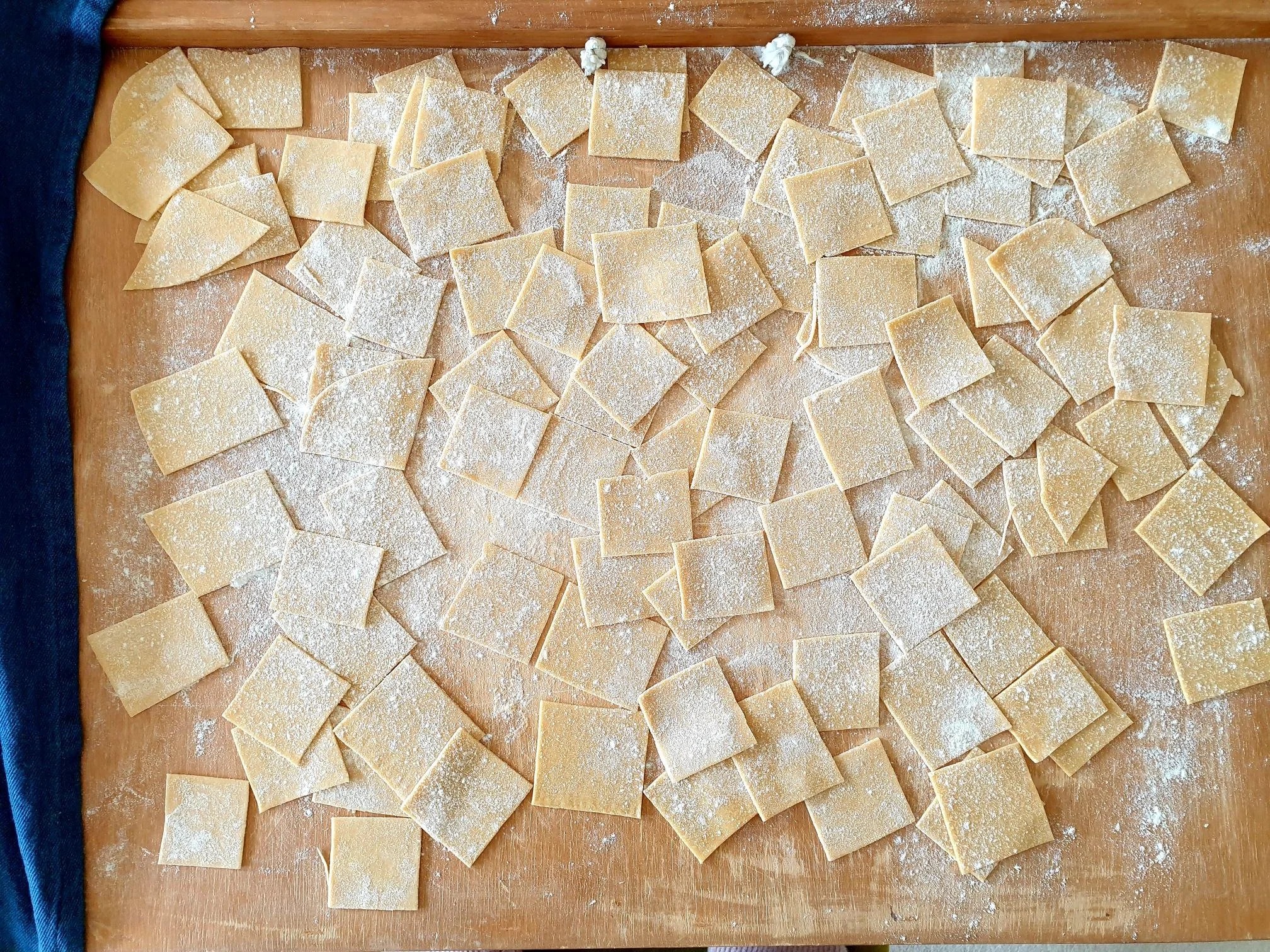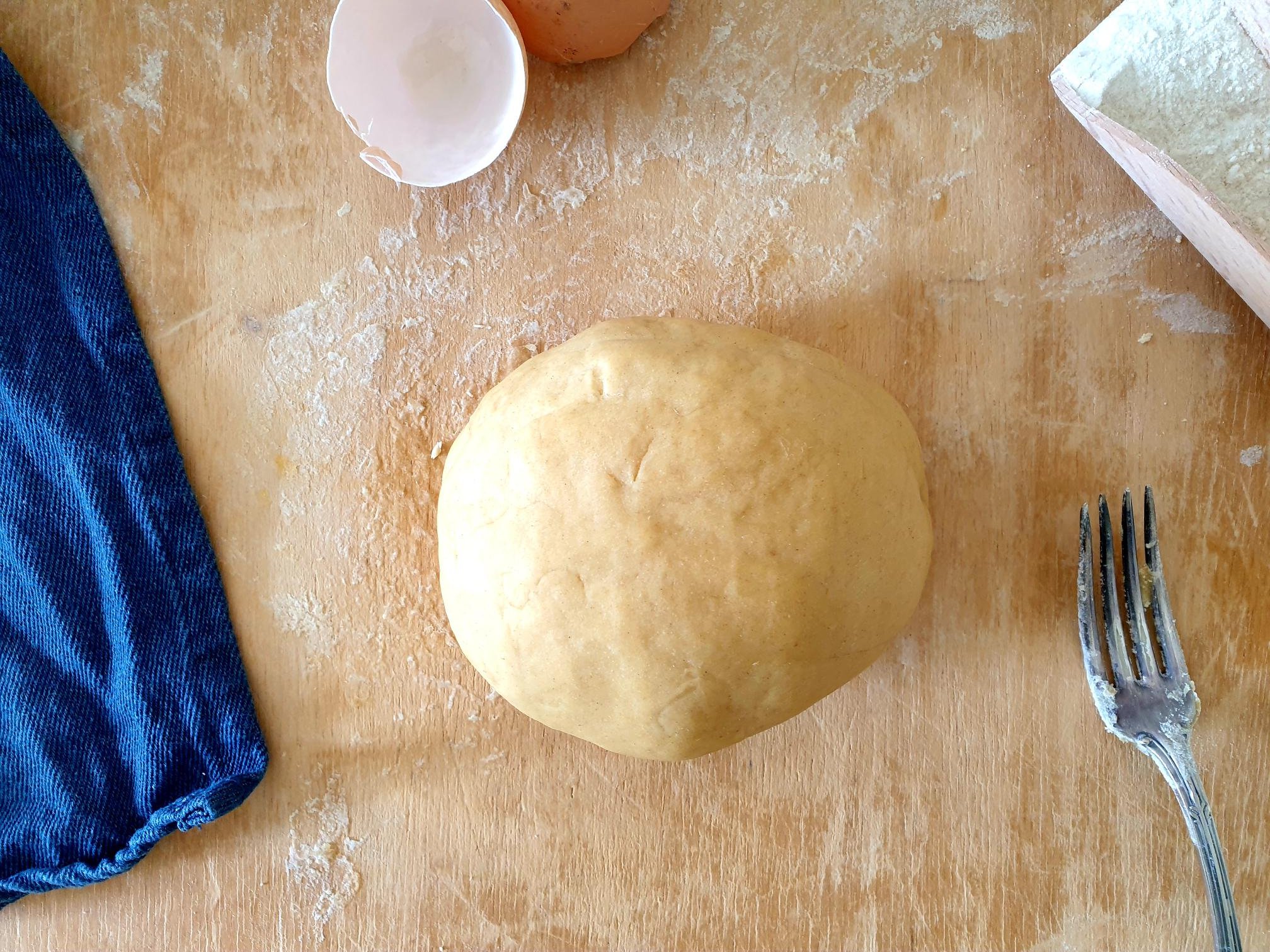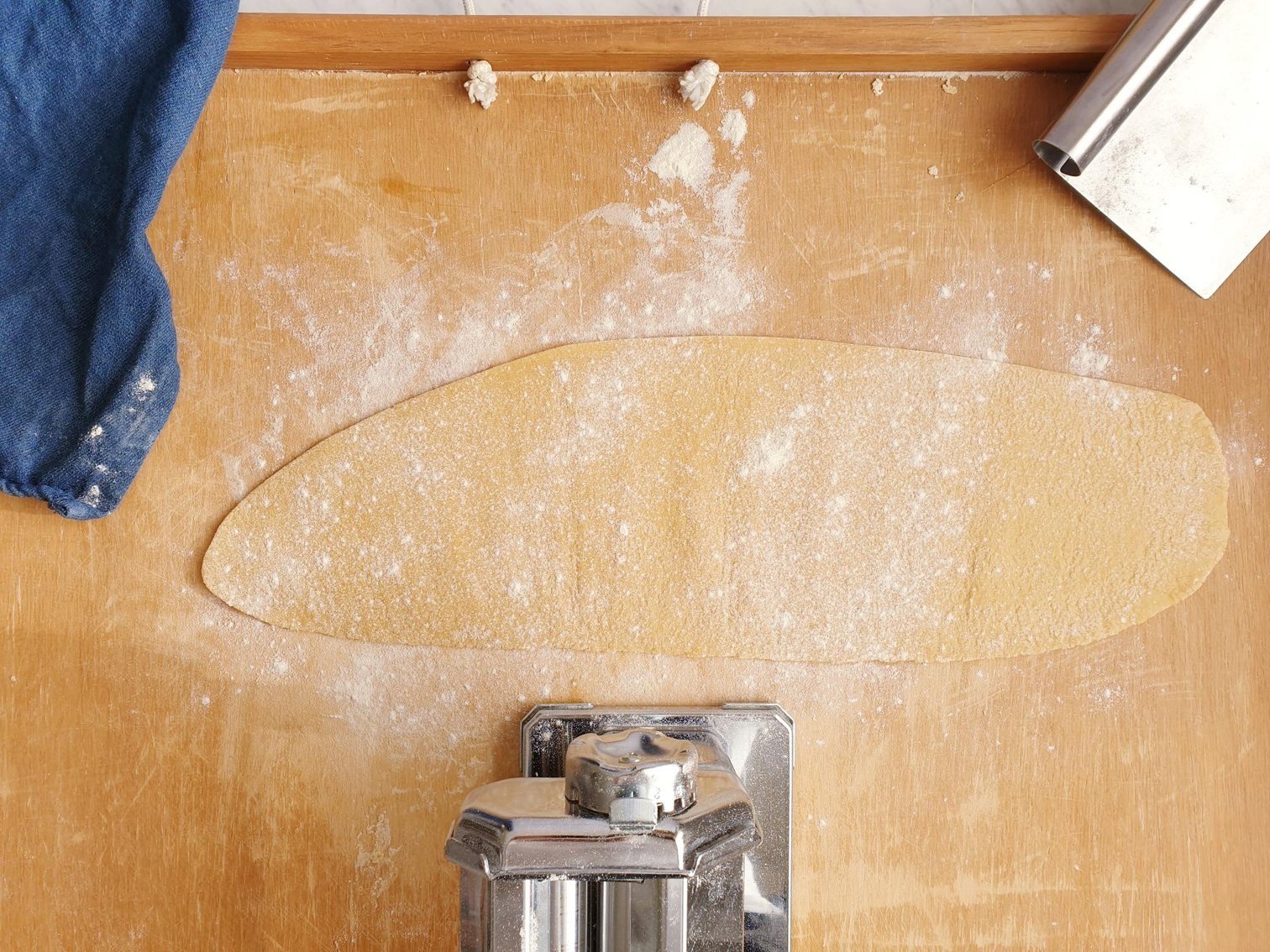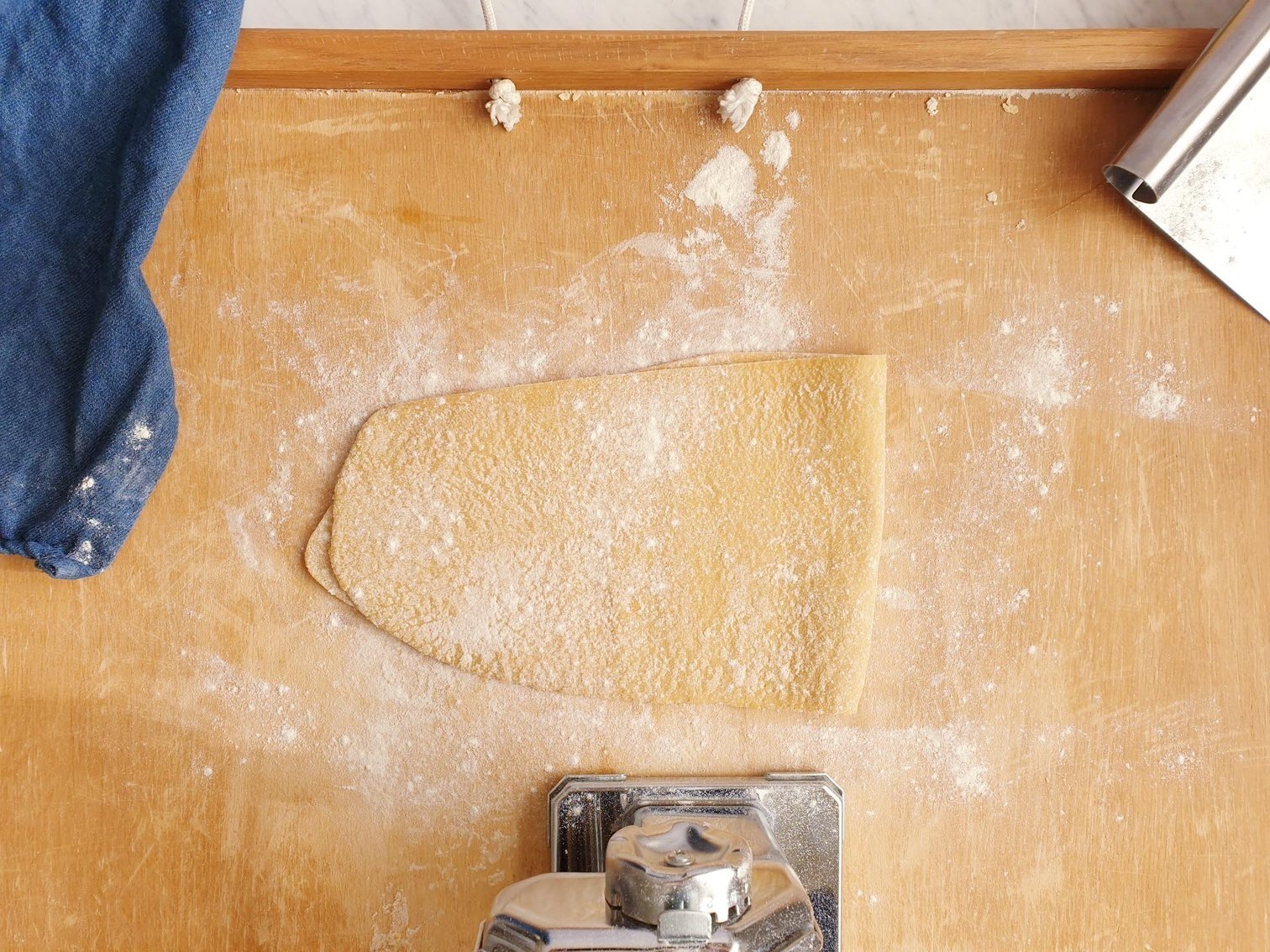Fuži – traditional handmade Istrian fresh pasta Recipe
Fuži (together with bleki and pljukanci) is a traditional and very well renowned type of Istrian fresh pasta from Slovenia and Croatia. It uses only two ingredients, it is easy and fun to make, and its shape is really beautiful.
Traditionally it is homemade, and hand rolled with a wooden rolling pin, but these days pasta machine is frequently used for practical reasons.
The origin of the name fuži comes from Latin word fusus, meaning a spindle.
This recipe for fresh pasta is great for the beginners, as there really is nothing daunting about making it, and children love getting involved too.
Generally, when we think of pasta, we have in mind a quick mid-week meal. This type of pasta, however, has been usually made in the households during festivities, holidays or as a Sunday lunch, and it has been traditionally served with chicken or rabbit goulash and sautéed sauerkraut.
It is also very commonly enjoyed with venison stew, braised pheasant, classic beef goulash, asparagus (in Istria wild asparagus when in season), cured ham or pancetta cream-based sauce, mushroom creamy sauce, and of course, the Istrian luxurious white truffle creamy sauce, popular in the autumn.
This pasta is also very delicious paired with any vegetarian and fish-based sauces or any other sauce you might like (different types of pesto).
I am sharing here the recipe for fuži, a fresh homemade pasta that holds a very special place in Istrian gastronomy, and it is frequently found in local restaurants.
Ingredients
Serves 2-4
300g plain (all purpose) white flour
3 medium eggs
You will also need a wooden kebab stick, or a wooden spoon, to shape the fuži.
Method
Place the flour directly on a working surface, wooden board or a mixing bowl, and make a well in the centre.
Crack the eggs directly into a well.
Using a fork, mix the eggs with the flour, incorporating a little at a time, until everything is combined, and the dough comes together.
Transfer the dough onto a working surface and start kneading. It could take around 10 minutes of kneading for the gluten to develop in the flour and to get a smooth and elastic lump of dough.
Wrap the dough tightly with the cling film or a clean cotton kitchen cloth and let it rest for about 30 minutes at the room temperature.
Unwrap the dough and divide it into 4 pieces. Take one piece of the dough and cover the rest of the dough that you are not working with, with the cling film to prevent it from drying and cracking.
With your hands flatten the piece of the dough you are working with to a thickness of about 0.5cm and lightly dust with flour to prevent it from sticking.
Put the flattened piece of the dough through pasta machine on the widest setting. If you don't have pasta machine, use a rolling pin.
Fold the dough in half, keep rollers on the widest setting, and roll the dough again through the pasta machine.
Flour as needed to prevent sticking, and keep rolling pasta dough through pasta machine reducing the width of the rollers one setting at a time.
Continue rolling until pasta dough has been rolled through the thinnest setting.
At this stage you should end up with a very thin pasta (lasagna) sheet.
Place pasta sheet on a working surface.
With a sharp knife (I used pizza cutter wheel) cut the pasta sheet into 4cm (1½ inch) squares.
Take a wooden kebab stick (some prefer to use the handle of a wooden spoon) and place it on the edge of the pasta square.
Gently roll the stick to get a shape of a fuži, then remove the stick.
Repeat the process with other pasta squares (during this process try to avoid a lot of flour as this will prevent the opposite sides of the pasta square to stick together).
The idea behind shaping this pasta is that the opposite ends of the squares/diamonds are folded over each other, overlapping slightly, and sticking together forming a hollow shaped fuži.
Repeat the process with other pieces of dough.
Just a thought
Fuži can be made ahead of time and frozen. Make sure you place and spread the uncooked fuži in a single layer (so they do not stick together) on a floured baking tray (sheet), wooden board or similar. Place them in the freezer for at least 20-30 minutes, and once frozen separately, put them into freezing bags. When you want to cook them just drop them frozen directly into boiling salted water without defrosting them first.
You can also store already cooked fuži. Cook fresh pasta as soon you make it, drain it and place it in an airtight container, drizzle with a bit of oil and gave a container a little shake. Let it cool completely, cover with the lid, and store in the fridge for a couple of days (the pasta will turn slightly greyish in colour, do not get alarmed, this is perfectly normal).
You can also dry the pasta. Place freshly made fuži onto a floured baking sheet or wooden board and cover the shaped pasta with a clean kitchen towel and let them dry for a few days. Give fuži a gentle toss now and again. Store in a paper bag or in a jar.


